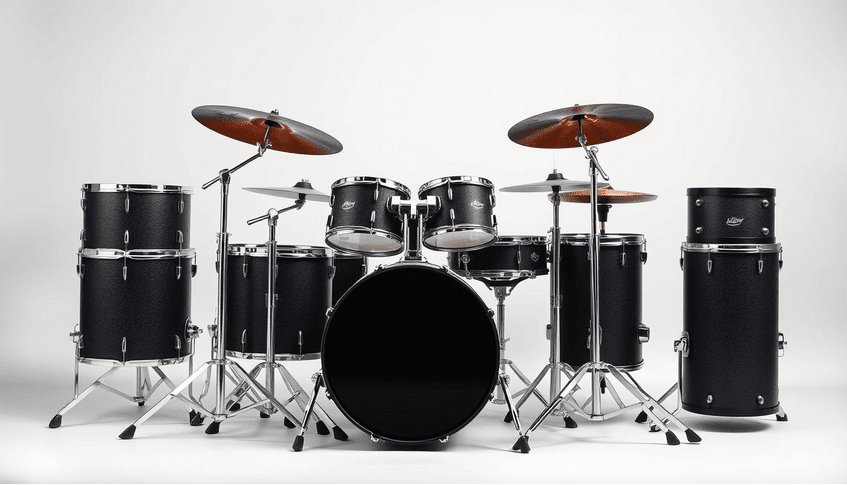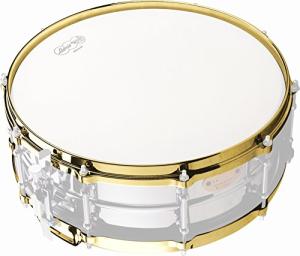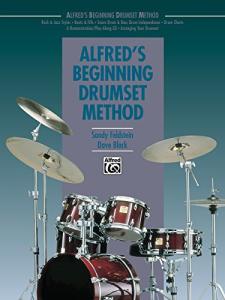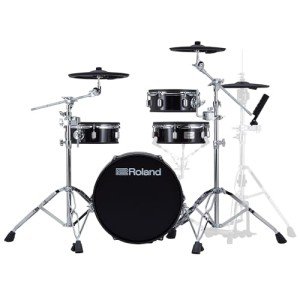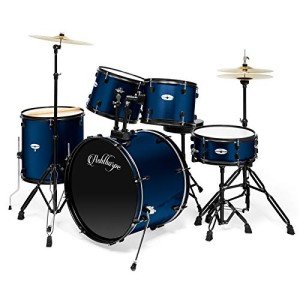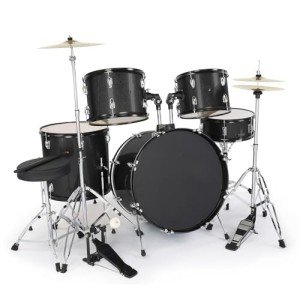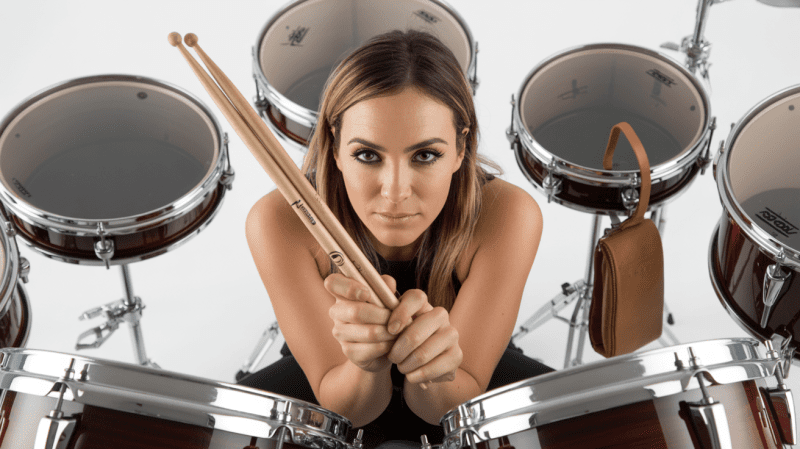“Everything You Need to Know Before Buying Your First Kit”

Choosing your first drum set is a big step in starting your musical journey. It's both exciting and overwhelming, with many options out there.
As a beginner, you should think about a few key things. These include the type of drum set, its layout, and the quality of its parts. A good drum set can make learning more fun and keep you practicing.
With so many choices, picking the right drum set can feel tough. But, knowing what to look for can help you make a smart choice. This way, you can find the perfect drum set for you.
Key Takeaways
- Understand the different types of drum sets available.
- Consider the configuration and components of the drum set.
- Research and compare different drum sets before making a purchase.
- Think about your budget and your level of commitment.
- Seek advice from experienced drummers or music teachers.
Understanding Drum Set Basics
The world of drumming begins with understanding the basic components of a drum set. A drum set has drums, cymbals, and hardware. This knowledge is key for beginners.
Essential Components of a Standard Drum Kit
A standard drum kit typically features drums and cymbals mounted on a hardware stand. The drums include a bass drum, snare drum, and tom-toms. The cymbals are hi-hats, crash cymbals, and sometimes a ride cymbal. The hardware has stands for drums and cymbals, and pedals for the bass drum and hi-hats.
Different Types of Drum Sets for Beginners
Beginners have two primary types of drum sets: acoustic and electronic. Acoustic sets feature wooden shells and metal cymbals, producing a rich, authentic sound. Electronic sets use rubber pads and electronics, offering flexibility and volume control.
Choosing between them depends on your goals, available space, and personal preferences. Acoustic sets are great for a traditional feel. Electronic sets are best for flexibility and quiet practice.
How to Pick Out Your First Drumset: A Step-by-Step Approach

Choosing your first drumset is a big deal. It's not just about the money. It's also about the time and effort you're willing to put in.
Assessing Your Musical Goals and Commitment Level
First, think about why you want to play drums. Do you want to have fun, or do you dream of being in a band? Your goals will help you choose the right drum set. Also, consider how often you'll practice and how quickly you'll improve.
Setting a Realistic Budget
Next, decide how much you can spend on a drumset. Prices vary a lot. As a beginner, you don't need to spend a lot. Look for drumsets that fit your budget and see what's included. Some kits come with everything you need, while others might require extra purchases.
Considering Your Available Space
Think about where you'll practice. If you live in a small space, a compact or electronic drum set might be better. Measure your space to ensure the drum set fits well. This will help you play comfortably.
By considering your goals, budget, and space, you can select the right drum set. This careful approach will help you start your drumming journey on the right foot.
Essential Features to Look for in a Beginner Drum Kit

As a beginner, knowing what to look for in a drum kit is key. A good drum kit helps you learn and keeps you excited about drumming.
Shell Material and Construction Quality
The material and construction of the drums affect their sound and longevity. You can choose from wood, metal, or a mix of both. Each material produces a distinct sound, so consider the music you want to play.
Wooden drums have a warm, rich sound, making them ideal for a wide range of genres. Metal drums are bright and sharp, perfect for rock and metal. The way the drums are made and finished also matters a lot.
Key considerations for shell material and construction include:
- Material type (wood, metal, hybrid)
- Shell thickness and its impact on sound
- Craftsmanship and finish quality
Hardware Durability and Stability
The hardware of your drum kit, like stands and pedals, is crucial. Good hardware keeps your drums steady, preventing damage and improving your playing.
Look for double-braced stands, strong pedals, and secure mounts. These features make your kit stable and reliable, letting you focus on your drumming.
| Hardware Component | Features to Look For |
|---|---|
| Drum Stands | Double-braced legs, adjustable height |
| Pedals | Sturdy construction, adjustable sensitivity |
| Mounts | Secure clamping, easy adjustment |
Cymbals: What's Included and What You Might Need to Add
Cymbals add variety and expression to your drumming. Beginner kits usually come with basic cymbals. But, you might need more or better cymbals as you get better.
Check if the cymbals in your kit fit your musical style. You'll need crash, ride, and hi-hat cymbals. Knowing their roles helps you choose the right ones for your kit.
"The right cymbals can elevate your drumming, adding depth and character to your sound." -
By focusing on these key features, you can find a beginner drum kit that supports your growth as a drummer.
Drum Sizes and Configurations for Different Styles
The size and setup of a drum set significantly impact the sound and style of the music. Different genres need specific drum sizes and setups. This impacts the overall sound and performance.
Standard Configurations for Rock and Pop
In rock and pop music, a common drum setup is used. It usually has a 22-inch bass drum, 10- and 12-inch rack toms, and a 16-inch floor tom. This setup gives a balanced sound good for many styles in these genres.
Compact Options for Jazz and Acoustic Settings
Jazz and acoustic music often use smaller drum setups. These might include an 18-inch bass drum, 8- and 10-inch rack toms, and a 14-inch floor tom. These smaller kits create a warmer, more focused sound perfect for jazz and acoustic music.
Specialized Setups for Metal and Other Genres
Metal and extreme genres need special drum setups. These might include larger bass drums (24 inches or more), additional toms for a wider range, and extra cymbals for greater versatility. The setup is designed to make a powerful, aggressive sound typical of these genres.
| Genre | Bass Drum Size | Rack Toms | Floor Tom |
|---|---|---|---|
| Rock/Pop | 22 inches | 10, 12 inches | 16 inches |
| Jazz/Acoustic | 18 inches | 8, 10 inches | 14 inches |
| Metal | 24+ inches | Variable | Variable |
Must-Have Accessories for New Drummers
Starting your drumming journey? The right accessories can make a big difference. They enhance your experience and help you learn and improve.
Essential Items: Throne, Sticks, and Practice Pad
Every drummer needs a few key items. A comfortable drum throne is crucial for long practice sessions and performances. Drumsticks vary in size and material, so try different ones to find the one that suits you best. A practice pad is also key for quiet practice and improving your technique.
Sound Management: Mutes, Mesh Heads, and Noise Control
Sound management is key, whether you live in an apartment or practice late. Mutes and mesh heads help lower the volume without losing feel. They let you practice anytime without bothering others.
Educational Resources to Complement Your New Kit
Get the most from your drum set with beginner drum lessons or educational materials. Online tutorials, DVDs, and apps offer valuable guidance. "Drumming is a skill that requires patience, dedication, and the right resources," says a top drumming instructor.
"The right accessories can significantly enhance your drumming experience and help you progress more quickly."
With these essential accessories, you'll enjoy drumming and see your skills grow.
Top Recommended Beginner Drum Set Brands and Models
The world of drum sets can be overwhelming for beginners. However, some brands are recognized for their exceptional quality and value. When selecting a beginner drum set, consider factors such as price, durability, and sound quality.
Budget-Friendly Options Under $500
For those on a tight budget, Yamaha and Gretsch offer great beginner drum sets under $500. These kits are ideal for beginners, offering good sound quality and durability. Yamaha's F310 is a top pick, known for its clear sound and strong build.
Mid-Range Options $500-$800
For those ready to spend a bit more, mid-range drum sets, priced between $500 and $800, offer better features and quality. Brands like Ludwig and Sonor are highly regarded. The Ludwig Breakbeats kit is a favorite, loved for its versatility and sound.
Premium Beginner Kits $800+
Premium beginner kits above $800 are perfect for serious learners. These kits, from brands like Pearl and Tama, offer top-notch sound and durability. The Pearl Export series is renowned for its exceptional sound and robust hardware.
In-Store Testing vs. Online Purchasing
Choosing between testing in-store or buying online is a big decision.
"Testing a drum set in person is invaluable; it allows you to assess the sound, feel, and overall quality firsthand."
However, buying online can be convenient and sometimes more cost-effective. It's essential to conduct your research and read reviews before making a decision.
Conclusion: Making Your Final Decision
Choosing the right drumset is a personal choice. It depends on your musical goals, budget, and space. You've learned a lot about picking a beginner drum set. It's essential to choose one that suits your needs and preferences.
To make an informed final decision, consider a few key factors. Check if you're committed, set a budget, and consider your space. Look for quality, durable parts and good cymbals. Also, think about the music you want to play.
With this beginner drum set buying guide, you're getting closer to the right drum set. Take your time and try out different sets. This will help you make the best choice for selecting the right drum set.
FAQ
What are the main differences between acoustic and electronic drum sets?
Acoustic drum sets make sound through vibration. Electronic sets use sensors and amplifiers. Acoustic sets give a traditional feel, while electronic sets offer flexibility and control over volume.
How do I determine the right drum set size for my needs?
Consider the music you want to play and the available space. Standard sizes work well for rock and pop. Jazz and acoustic music might need compact sets. Metal and other genres might require special setups.
What are the essential components of a standard drum kit?
A basic kit has a bass drum, snare drum, tom-toms, hi-hats, and cymbals. Consider the shell material, hardware, and cymbal quality when making your choice.
What is the ideal budget for a beginner drum set?
Beginners should budget between $300 and $1000. Options under $500 are good for beginners. Mid-range sets ($500-$800) and premium kits ($ 800 and above) offer more features.
Should I buy a drum set online or in-store?
Buying online is convenient, but you can't test the drums. In-store, you can try before you buy. Think about what's most important to you and do your research.
What accessories do I need to get started with drumming?
You'll need a throne, sticks, and a practice pad. Mutes, mesh heads, and noise control can help with sound. Online tutorials and lessons can also be a valuable resource for learning.
How do I choose the right cymbals for my drum set?
Consider your music preferences, personal taste, and cymbal material. Some kits come with cymbals, while others require a separate purchase.
Can I upgrade my drum set components later?
Yes, you can upgrade or replace parts like cymbals, drumheads, and hardware. This allows you to customize your kit as you improve.
What are some recommended beginner drum set brands?
Yamaha, Pearl, and Ludwig are good for beginners. Compare different models and read reviews to find the best fit for your needs.
Ludwig 14" Brass Die-Cast Snare Drum Hoop
Upgrade your sound with this durable and sleek snare drum hoop that boosts your drum's tone and response
Product information
$129.99
Product Review Score
4.82 out of 5 stars
195 reviewsProduct links
Alfred's Beginner Drumset Method for Easy Learning
A fun and simple way to kickstart your drumming journey today!
Product information
$7.99
Product Review Score
4.93 out of 5 stars
204 reviews